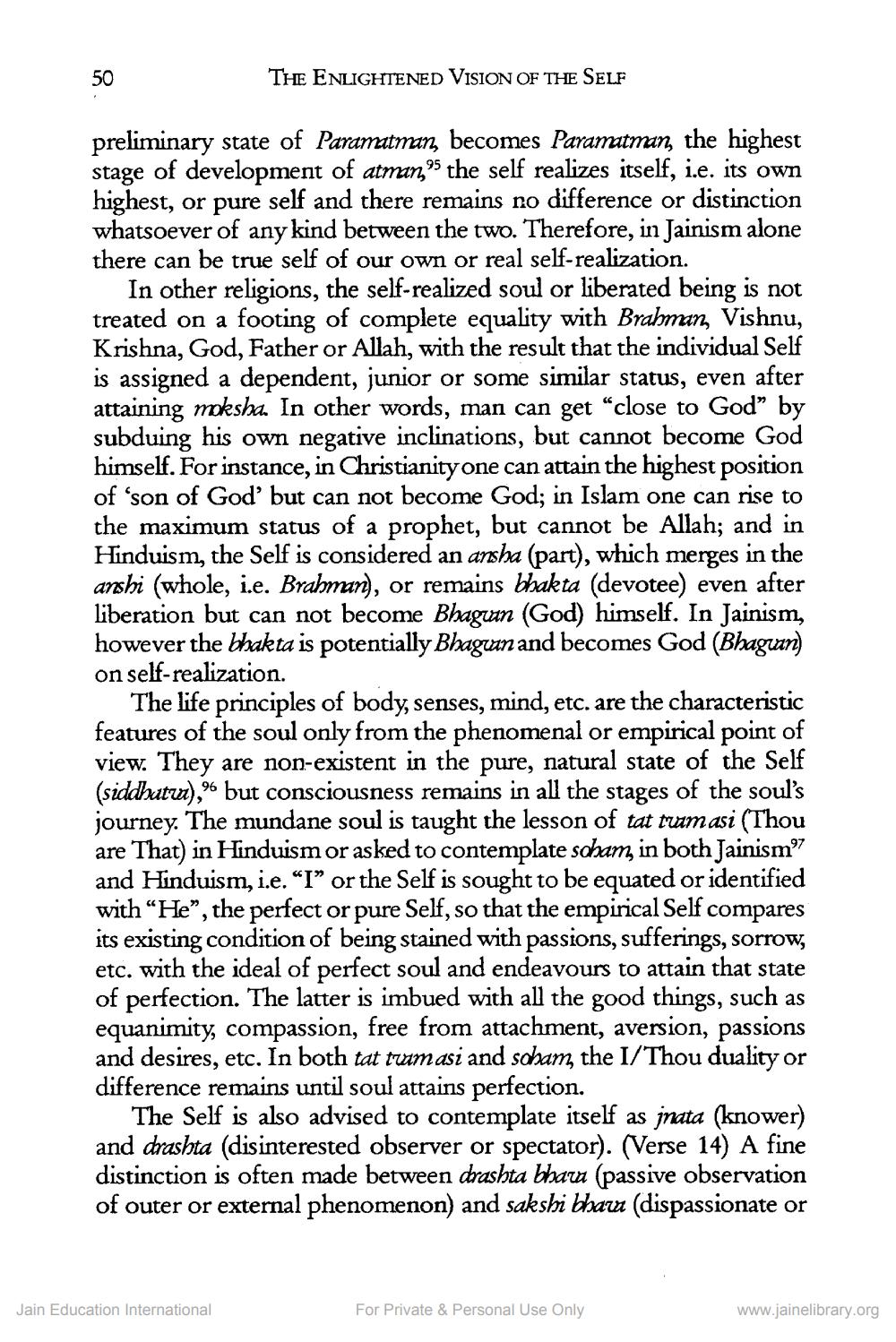________________
THE ENLIGHTENED VISION OF THE SELF
preliminary state of Paramatman becomes Paramatman, the highest stage of development of atman,95 the self realizes itself, i.e. its own highest, or pure self and there remains no difference or distinction whatsoever of any kind between the two. Therefore, in Jainism alone there can be true self of our own or real self-realization.
In other religions, the self-realized soul or liberated being is not treated on a footing of complete equality with Brahman Vishnu, Krishna, God, Father or Allah, with the result that the individual Self is assigned a dependent, junior or some similar status, even after attaining moksha. In other words, man can get "close to God” by subduing his own negative inclinations, but cannot become God himself. For instance, in Christianityone can attain the highest position of ‘son of God' but can not become God; in Islam one can rise to the maximum status of a prophet, but cannot be Allah; and in Hinduism, the Self is considered an ansha (part), which merges in the arshi (whole, i.e. Brahman), or remains bhakta (devotee) even after liberation but can not become Bhagian (God) himself. In Jainism, however the bhakta is potentially Bhagran and becomes God (Bhagan) on self-realization.
The life principles of body, senses, mind, etc. are the characteristic features of the soul only from the phenomenal or empirical point of view. They are non-existent in the pure, natural state of the Self (siddhutua),% but consciousness remains in all the stages of the soul's journey. The mundane soul is taught the lesson of tat tuamasi (Thou are That) in Hinduism or asked to contemplate scham, in both Jainismo and Hinduism, i.e. “I” or the Self is sought to be equated or identified with “He”, the perfect or pure Self, so that the empirical Self compares its existing condition of being stained with passions, sufferings, sorrow, etc. with the ideal of perfect soul and endeavours to attain that state of perfection. The latter is imbued with all the good things, such as equanimity, compassion, free from attachment, aversion, passions and desires, etc. In both tat tuamasi and scham, the I/Thou duality or difference remains until soul attains perfection.
The Self is also advised to contemplate itself as jnata (knower) and drashta (disinterested observer or spectator). (Verse 14) A fine distinction is often made between drashta bhara (passive observation of outer or external phenomenon) and sakshi bhara (dispassionate or
Jain Education International
For Private & Personal Use Only
www.jainelibrary.org




